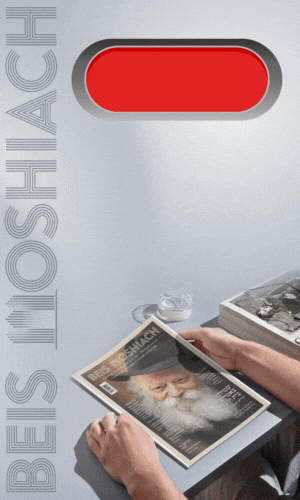New York Times Memorializes Legendary Choizer
For decades he memorized virtually verbatim the speeches and discourses of Rabbi Menachem Schneerson and meticulously compiled them into about 150 volumes • Full Story
By Joseph Berger, nytimes.com
Rabbi Yoel Kahn, who as a leading disciple of Rabbi Menachem Mendel Schneerson, the revered leader of the Lubavitch Hasidim, had the uncanny ability to memorize virtually verbatim the grand rabbi’s hourslong speeches and discourses, which he then compiled into roughly 150 published volumes, died on July 15 in Manhattan. He was 91.
The cause was cardiac arrest, said Motti Seligson, a spokesman for the worldwide Chabad-Lubavitch movement. Rabbi Kahn died in a hospital and lived in the Crown Heights neighborhood of Brooklyn, the seat of the movement.
From Rabbi Schneerson’s ascension to the leadership of the movement in 1951, Rabbi Kahn dedicated himself to preserving a record of the leader’s speeches, off-the-cuff talks and other teachings, regarding them as the collective wisdom of a modern-day Talmudic sage or prophet.
Out of the gothic brick Lubavitch synagogue and headquarters at 770 Eastern Parkway in Crown Heights, Rabbi Schneerson, known universally as the rebbe, would expound in Yiddish on passages of Torah, Talmud and kabbalah, or on Hasidic philosophy, ethical behavior and world events, always without notes or written text.
A large portion of the rebbe’s teachings were conveyed at farbrengen, or gatherings, on the Jewish Sabbath and sacred festival days, when writing or electronic recording is forbidden. When a Sabbath bumped up against, say, the first two days of Passover, three days might pass before Rabbi Schneerson’s thoughts could be transcribed.
Yet, according to Lubavitch scholars and spokesmen, Rabbi Kahn, with a memory described as photographic and with help from a team of assistants whom he had trained in memorization skills, was able to recall or retrieve the grand rabbi’s words in their entirety and would spend hours setting them down. He would submit them to the grand rabbi for editing, and they were ultimately compiled in printed editions, one of which, Torat Menachem (the Torah teachings of Menachem), numbers 117 volumes in Hebrew. For such feats he was anointed by Rabbi Schneerson with the title of chozer, or oral scribe.
“The rebbe spoke for 11,000 to 12,000 hours,” Mr. Seligson said. “Almost all of it has been retained because of Rabbi Kahn. His dedication to the rebbe was extraordinary.”
“He had immense knowledge, so he knew what the Rebbe was saying,” said Mr. Loewenthal, a member of Lubavitch.
That missionary movement, second in size to Satmar among Hasidic groups, has about 100,000 adherents. Tens of thousands more Jews visit its synagogues, collegiate centers and homes of emissaries scattered across the globe. Rabbi Schneerson was so venerated that many of those followers believe him still to be the Messiah.
Rabbi Kahn’s skill was no parlor trick. What chiefly distinguishes the Chabad-Lubavitch movement from other Hasidic and Orthodox groups is its devotion to reaching out to secularized or assimilated Jews. It offers college students chicken soup on Friday evenings, publishes ads reminding women to light candles to welcome the Sabbath, and buttonholes Jewish men on Manhattan sidewalks, urging them to enter what the Lubavitch calls “mitzvah tanks,” where they say morning prayers while strapped with tefillin — sets of boxes concealing Torah passages. Rabbi Kahn’s collections of Rabbi Schneerson’s teachings buttressed the movement’s outreach with intellectual heft and an aura of mysticism.
Such retention of a rabbi’s words accords with a Jewish tradition of passing on legends, moral parables and particulars of Jewish law orally. While the Torah was written on parchment scrolls, much of the Talmud is a compilation of rabbinic analyses and arguments that were passed along orally for generations before they were set down in written form.
Yoel Kahn was born on Feb. 14, 1930, in Moscow, the youngest of four children of Refoel Nachman and Rivkah (Davidson) Kahn. His parents belonged to an underground network of Hasidim and found ways of practicing their faith even as the atheistic Stalin government tried to stamp out religious observance in the Soviet Union. The elder Kahn had studied at a yeshiva in the White Russian town of Lubavitch, which was the seat of the Hasidic dynasty until it was abandoned with the onset of World War I. He was held in prison for the first three years of Yoel’s life.
By 1935 the family had escaped the Soviet Union and began making their way to British Mandate Palestine. During a sojourn in Austria, they met the sixth Lubavitch rebbe, Yosef Schneersohn, and his son-in-law and distant cousin Rabbi Schneerson, who lavished chocolates on Yoel and his siblings in farewells at a Vienna train station. Once in Palestine, Yoel was enrolled in a Lubavitch yeshiva and proved to be an exceptionally gifted student.
By the time he was a teenager, Rabbi Kahn decided to study with Rabbi Yosef Schneersohn in New York, but when he arrived, in 1950, he learned that the grand rabbi had died a few days earlier. A year later, Rabbi Schneerson was named head of the movement. Yoel, according to a statement by Chabad-Lubavitch, recognized that the new rebbe was too busy giving his advice to followers to write out his discourses. In a private audience, Rabbi Kahn agreed to become his chozer and embraced what became a lifelong assignment.
In 1954 Rabbi Kahn married Leah Butman, a descendant of the Schneerson clan. She is his sole survivor.
Rabbi Kahn was an esteemed teacher and spiritual guide at the central Lubavitch yeshiva, admired for his ability to clarify esoteric Hasidic concepts. As the Lubavitch movement grew, Rabbi Schneerson asked Rabbi Kahn to lead the production of an encyclopedia of Hasidic ideas and principles, titled Sefer Ha’Arachim. The first volume was published in 1970; he completed the ninth volume by 2019 and was still working on the project in the final weeks of his life.
Rabbi Kahn was such a meticulous and thorough scholar that even after nine volumes the encyclopedia had not moved beyond the first letter, aleph.
234
Join ChabadInfo's News Roundup and alerts for the HOTTEST Chabad news and updates!









































